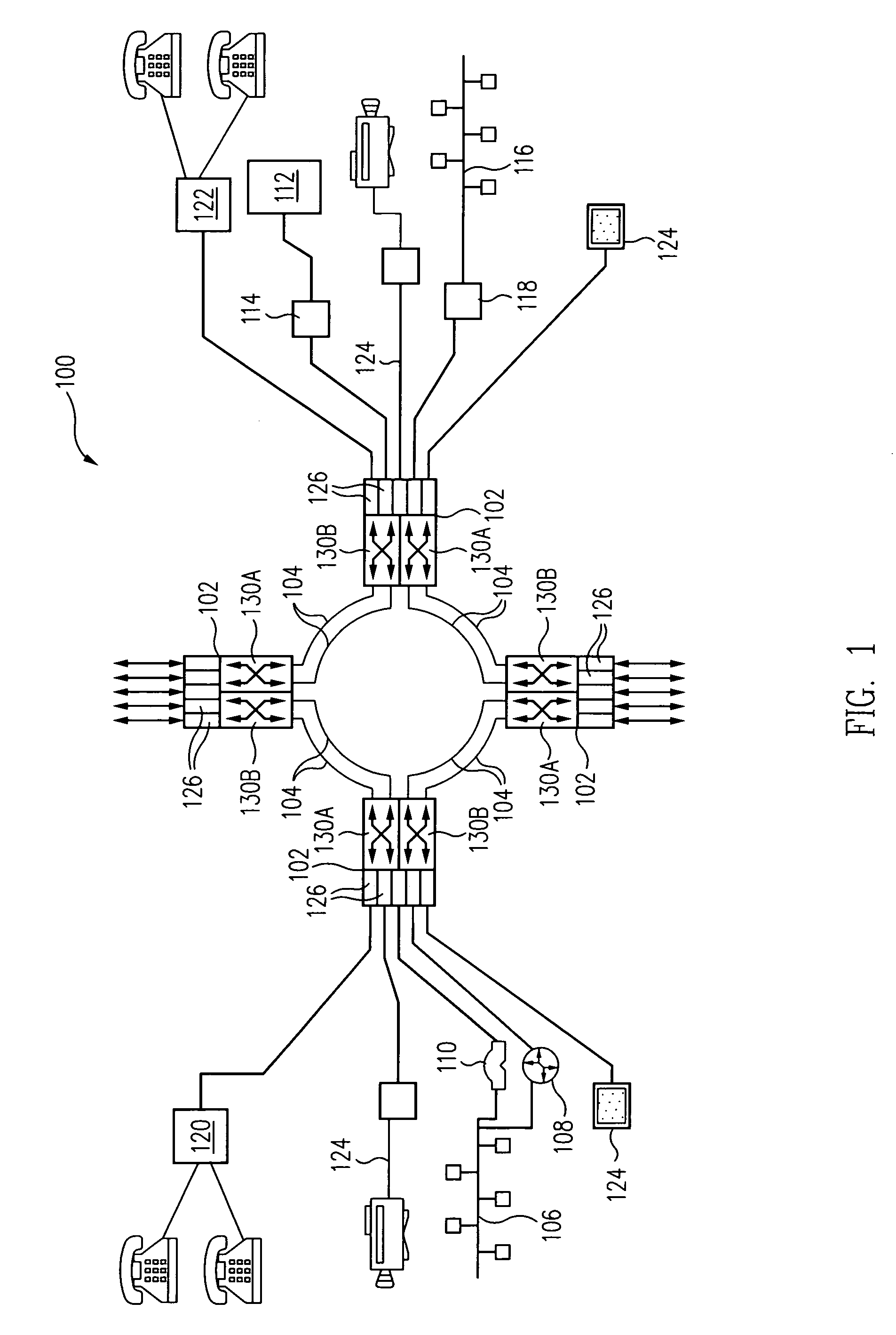Optical network restoration
a network restoration and optical network technology, applied in the field of optical network restoration, can solve the problems of significant bandwidth loss, inability of hybrid equipment to take full advantage of statistical multiplexing capabilities provided by packet technology, and inability to implement such a vt/sts path protection method
- Summary
- Abstract
- Description
- Claims
- Application Information
AI Technical Summary
Benefits of technology
Problems solved by technology
Method used
Image
Examples
Embodiment Construction
[0046]ATM was chosen by the ITU as the BISDN “universal” network and transport protocol for a broad range of user information, including voice, data, and video, over a user-to-network interface (“UNI”). ATM uses a high-speed “fast packet” or “cell relay” method of switching and transport to transmit information in the form of short, fixed-length “cells” across both private and public networks by reference to “virtual path” and “virtual channel” (“VPI” / “VCI”) addresses contained within the cells (i.e., “asynchronously”), rather than by reference to a fixed timing event (i.e., “synchronously”). The chief benefits of ATM are its ability, through the technique of statistical multiplexing, to provide increased effective bandwidth, i.e., “bandwidth on demand,” for “bursty,” asychronous types of data traffic, while at the same time delivering the traffic at specific Quality of Service (“QoS”) levels.
[0047]The term “SDH” refers to the international “Synchronous Digital Hierarchy” standard d...
PUM
 Login to View More
Login to View More Abstract
Description
Claims
Application Information
 Login to View More
Login to View More - R&D
- Intellectual Property
- Life Sciences
- Materials
- Tech Scout
- Unparalleled Data Quality
- Higher Quality Content
- 60% Fewer Hallucinations
Browse by: Latest US Patents, China's latest patents, Technical Efficacy Thesaurus, Application Domain, Technology Topic, Popular Technical Reports.
© 2025 PatSnap. All rights reserved.Legal|Privacy policy|Modern Slavery Act Transparency Statement|Sitemap|About US| Contact US: help@patsnap.com



